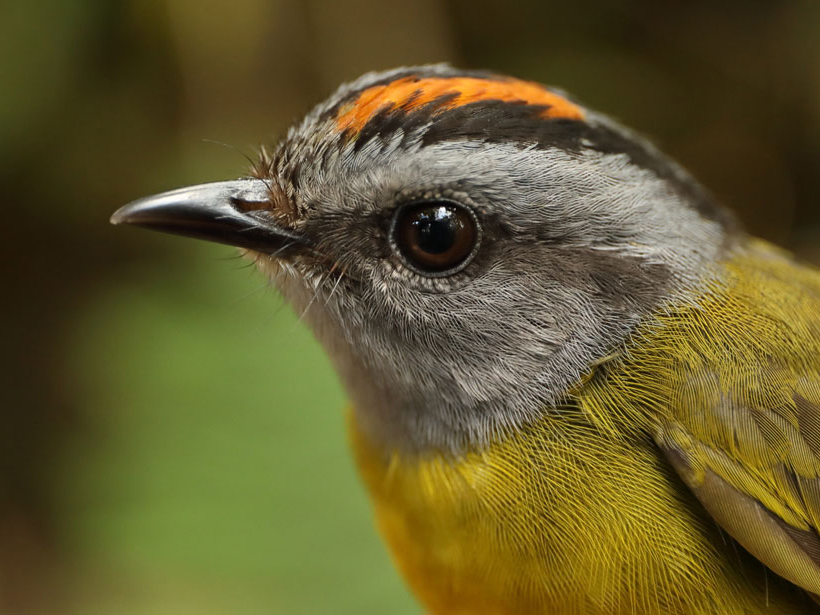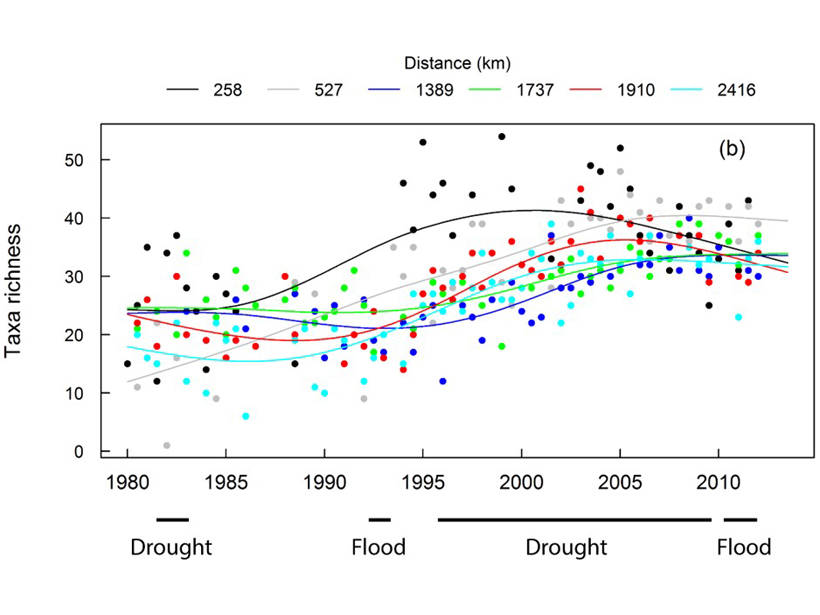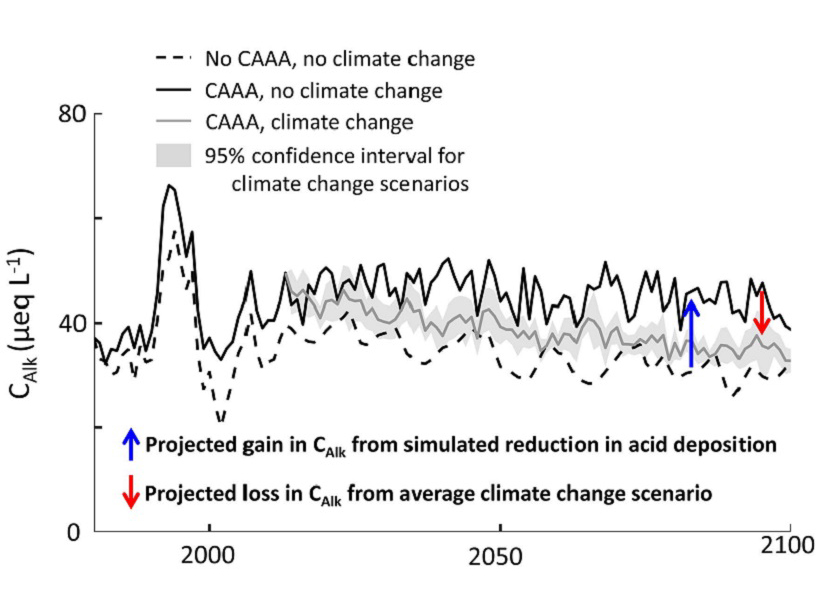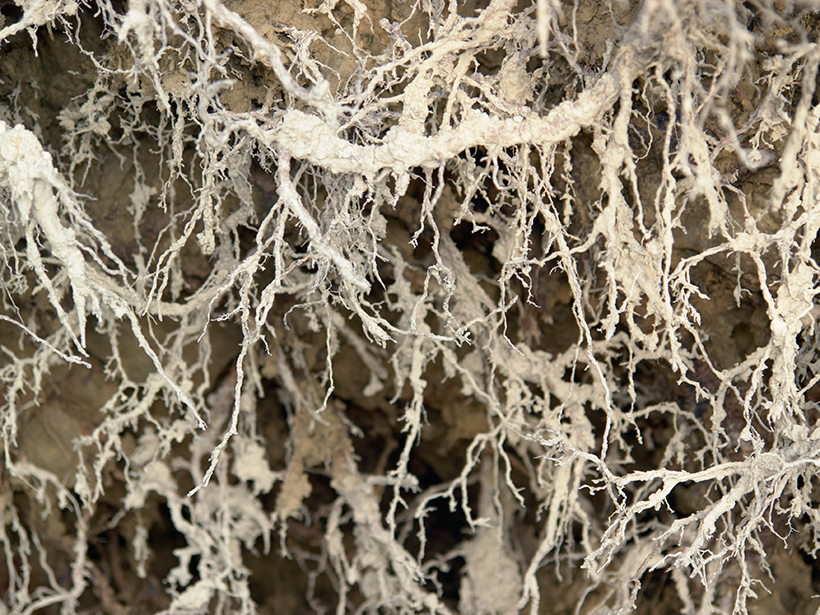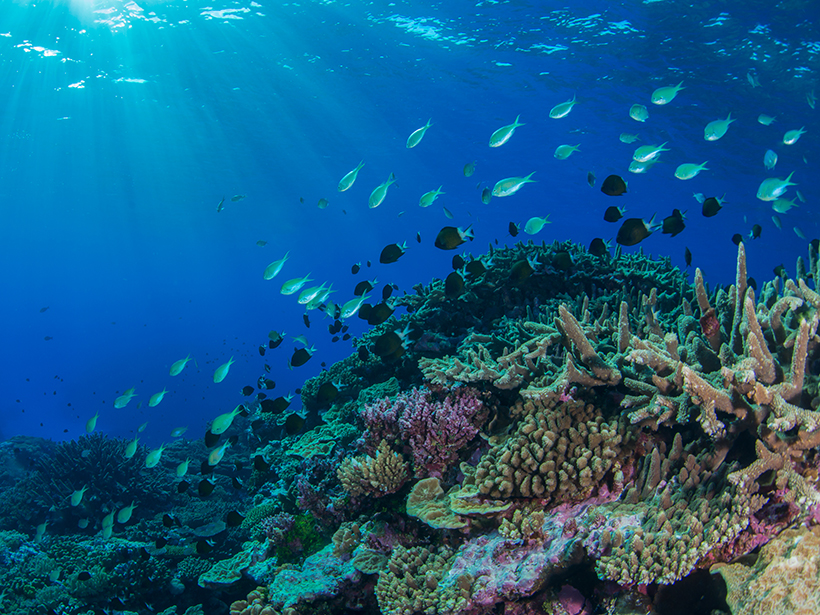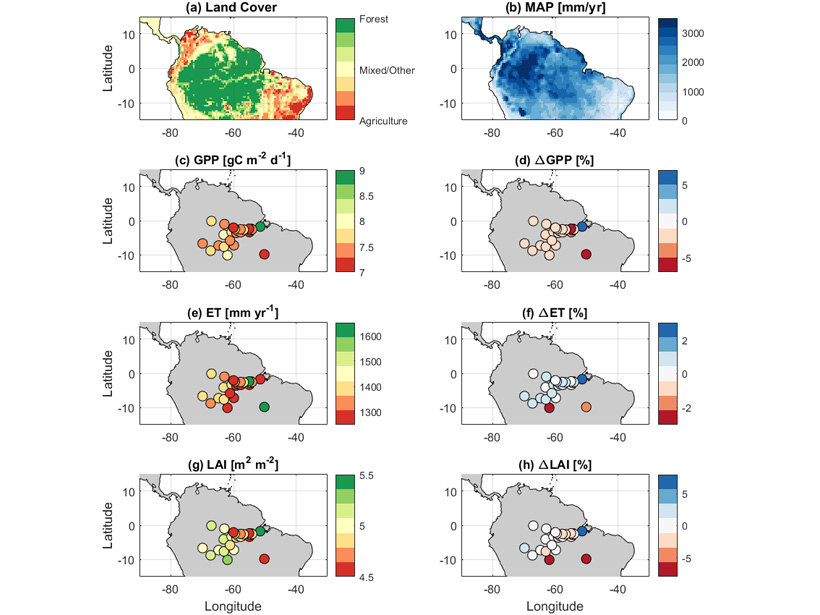Spotted seatrout, one of the most popular fish to catch on the shores of Texas, carried on their nightly baby-making ritual despite the havoc of a category 4 storm above.
ecosystems
Peruvian Mountain Birds Take an “Escalator to Extinction”
As the climate warms, tropical birds living in the mountains are retreating to higher elevations to avoid the heat. What happens when they run out of mountain slope to escape to?
Long-term Dataset Reveals How Management Affects River Biology
River systems are affected by societies against a backdrop of climate change. A new dataset reveals how these forces affect river flow, chemistry, and the biological health of the river.
The Acid Tongue of Climate Change Strikes Our Streams
Clear air policies have led to dramatic reductions in acid rain and improved ecosystem health, but it now appears that climate change could counteract those gains.
A Cross-Sectoral Approach to Tackle Ocean Plastic Pollution
Plastic in the Oceans: Challenges and Solutions; Cambridge, United Kingdom, 7 March 2018
Better Plant Data at the Root of Ecosystem Models
Version 2 of the Fine-Root Ecology Database is bigger, better, and free to download and use.
Just How Anomalous Is the Vast Baltic Sea Dead Zone?
Newly drilled cores from the Baltic Sea reveal 1,500 years of deoxygenation history. The record sheds light on the dire state of the Baltic Sea today.
Heat Waves, More Than Coral Death, May Cause Fish to Flee Reefs
A study over a broad swath of the Great Barrier Reef shows that warming waters directly cause fish and invertebrates to leave the reef, making it harder for coral to recover from bleaching events.
Invasive Freshwater Mussels Drive Changes in Estuary Sediments
The golden mussel has spread quickly in the 30 years since its arrival in South America and is transforming aquatic ecosystems in waterways across the continent.
Seasonal Leaf Production Is Key Control on Amazon Carbon Balance
Characterizing leaf phenology in process-based models reconciles both “dry season green-up” and drought controls on Amazonian carbon balance.


